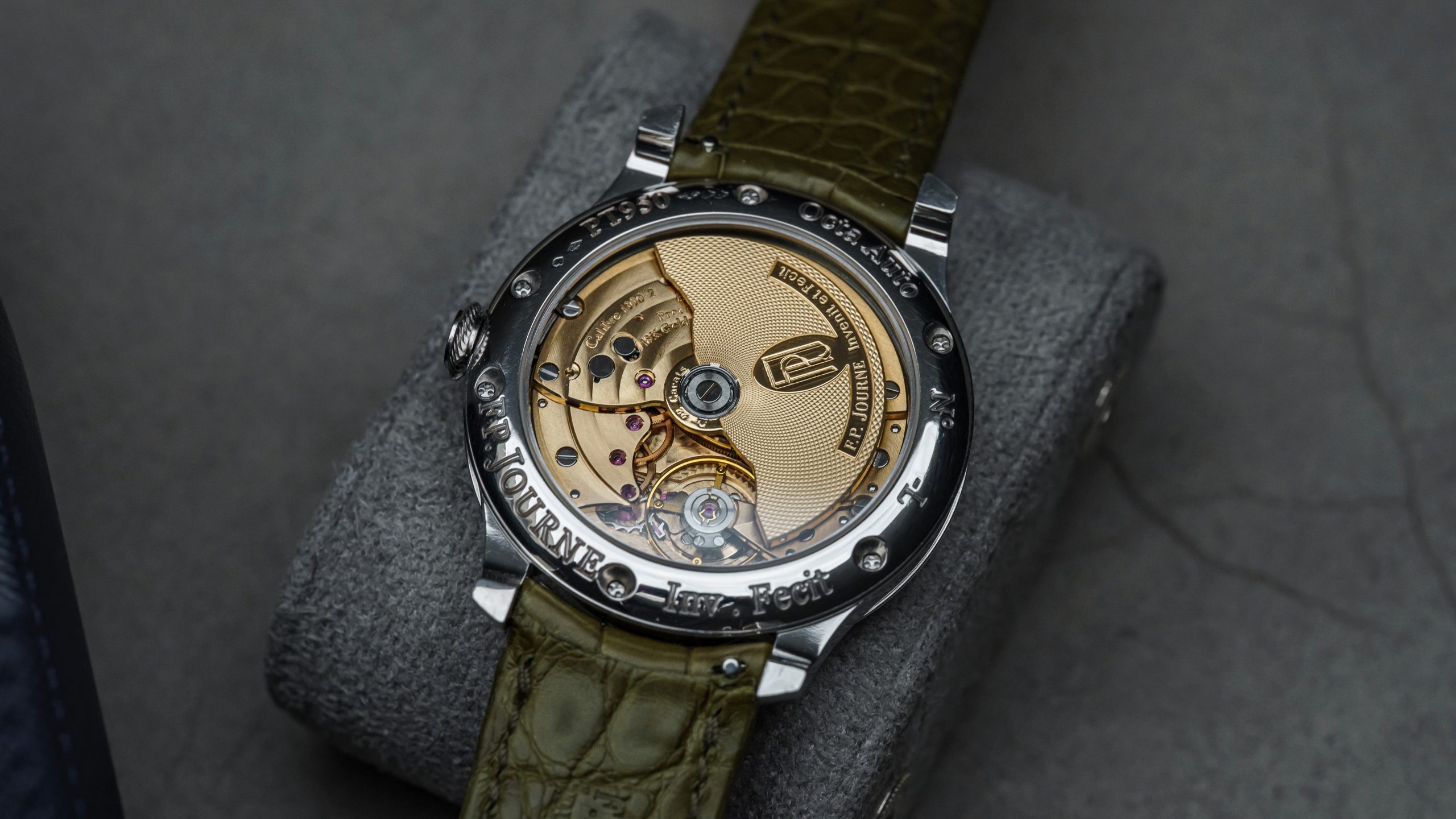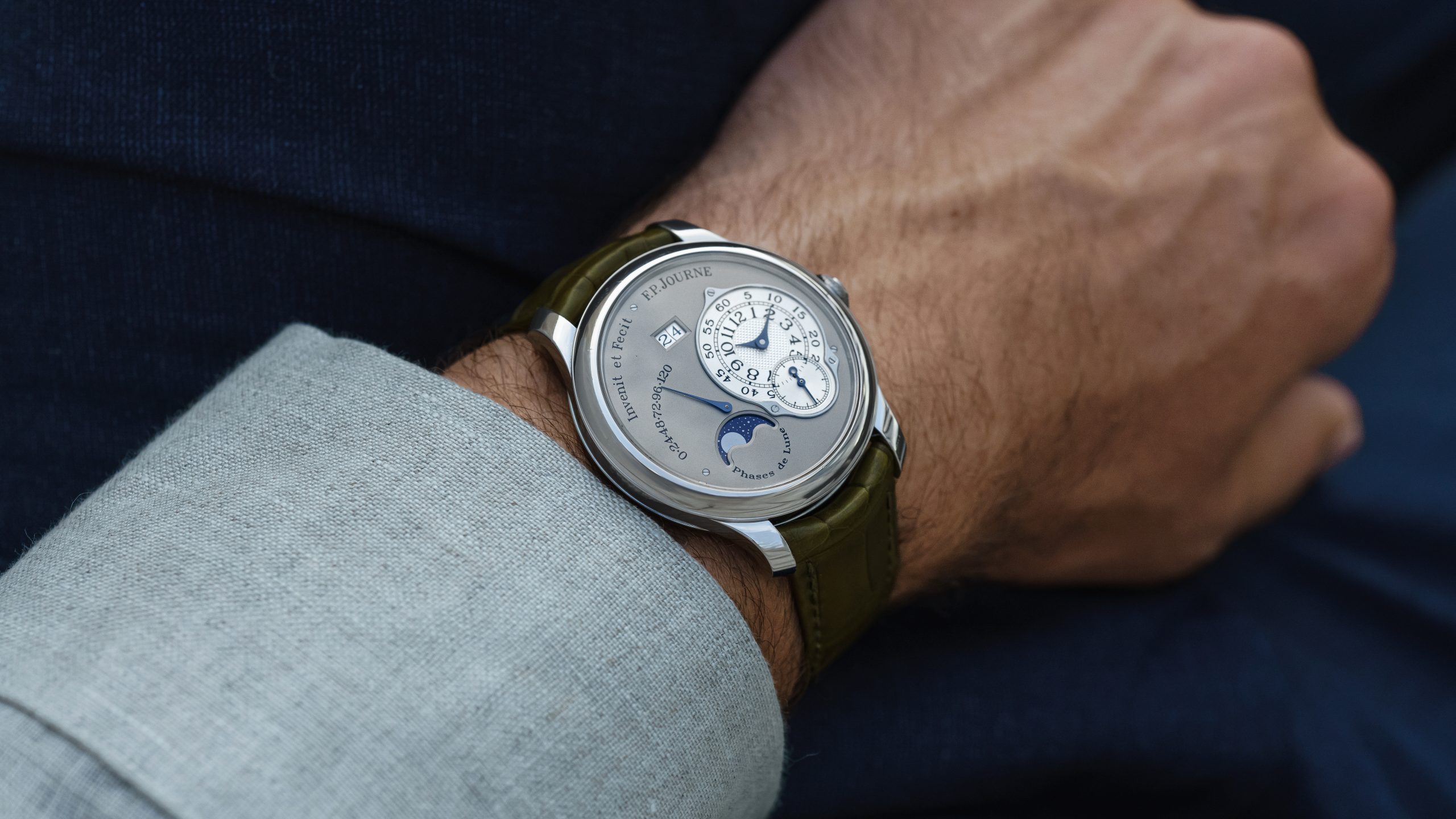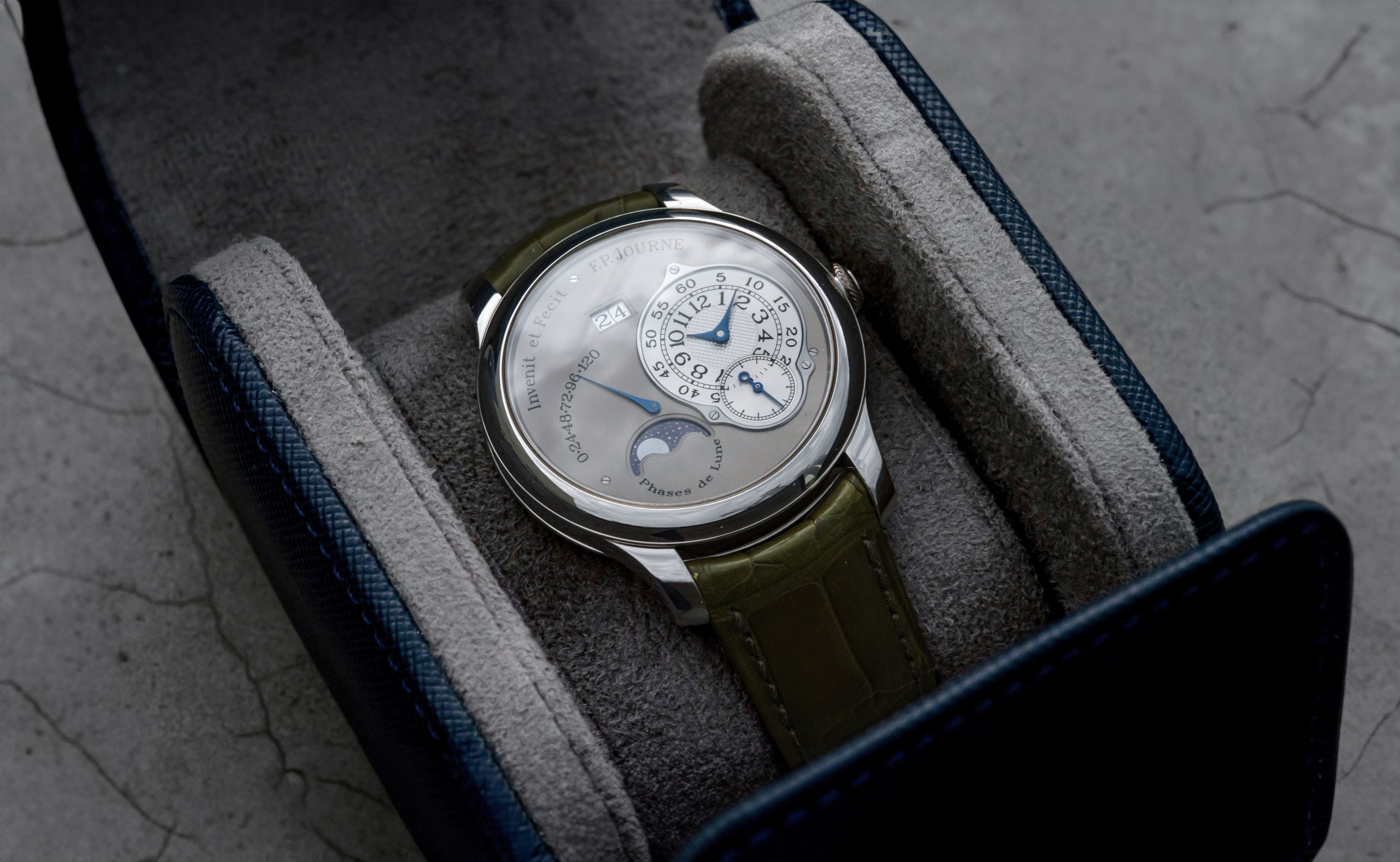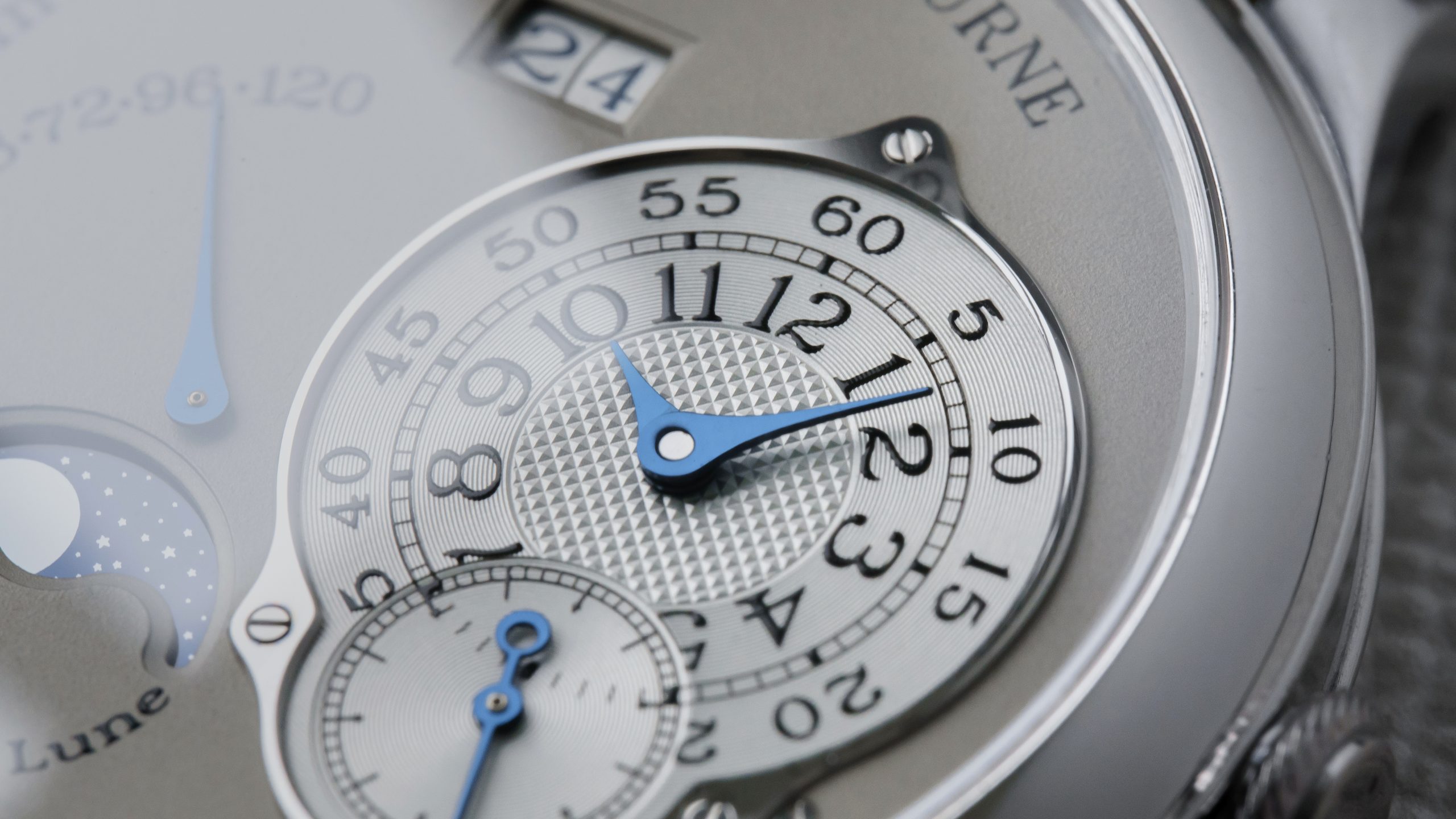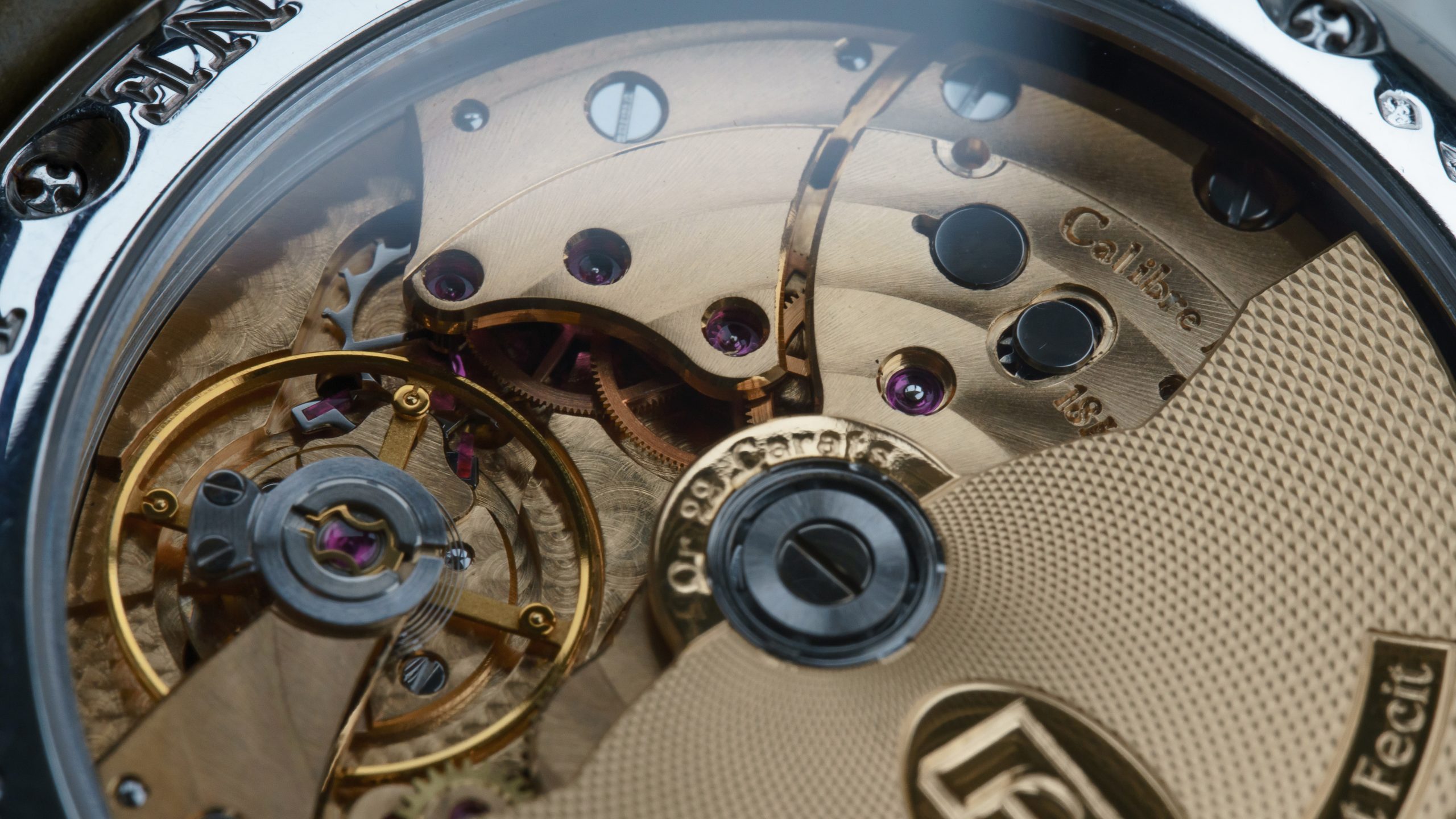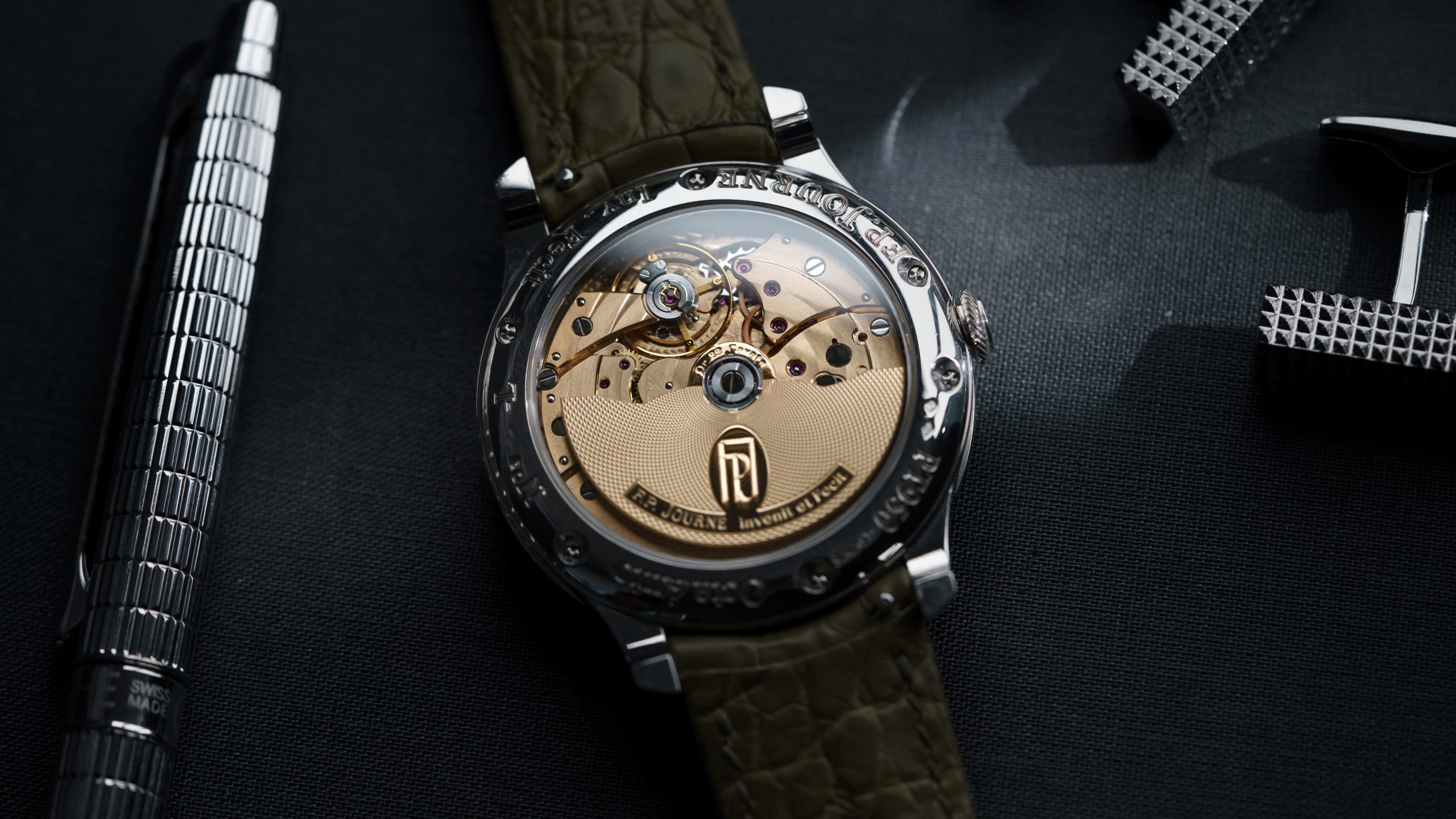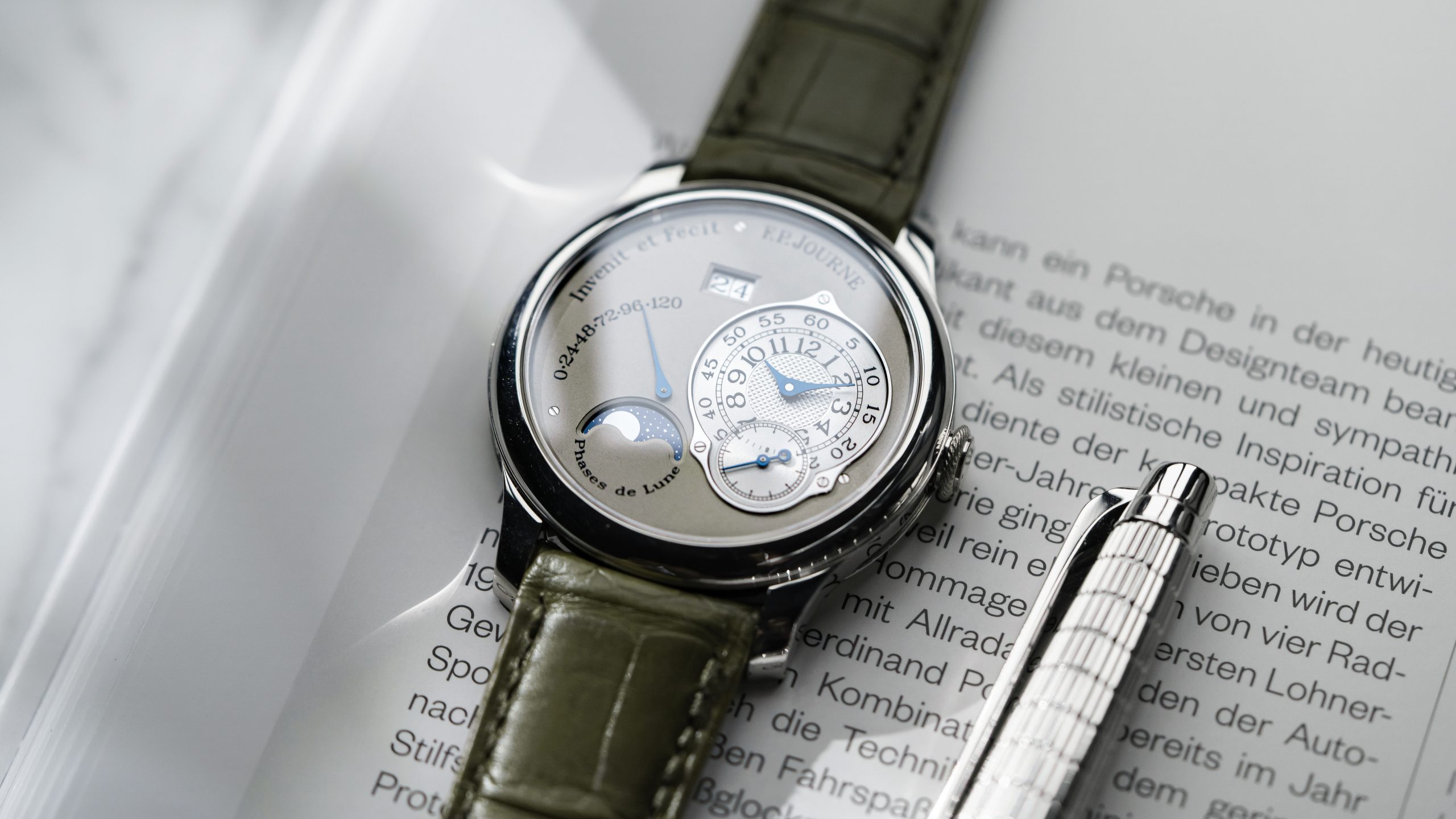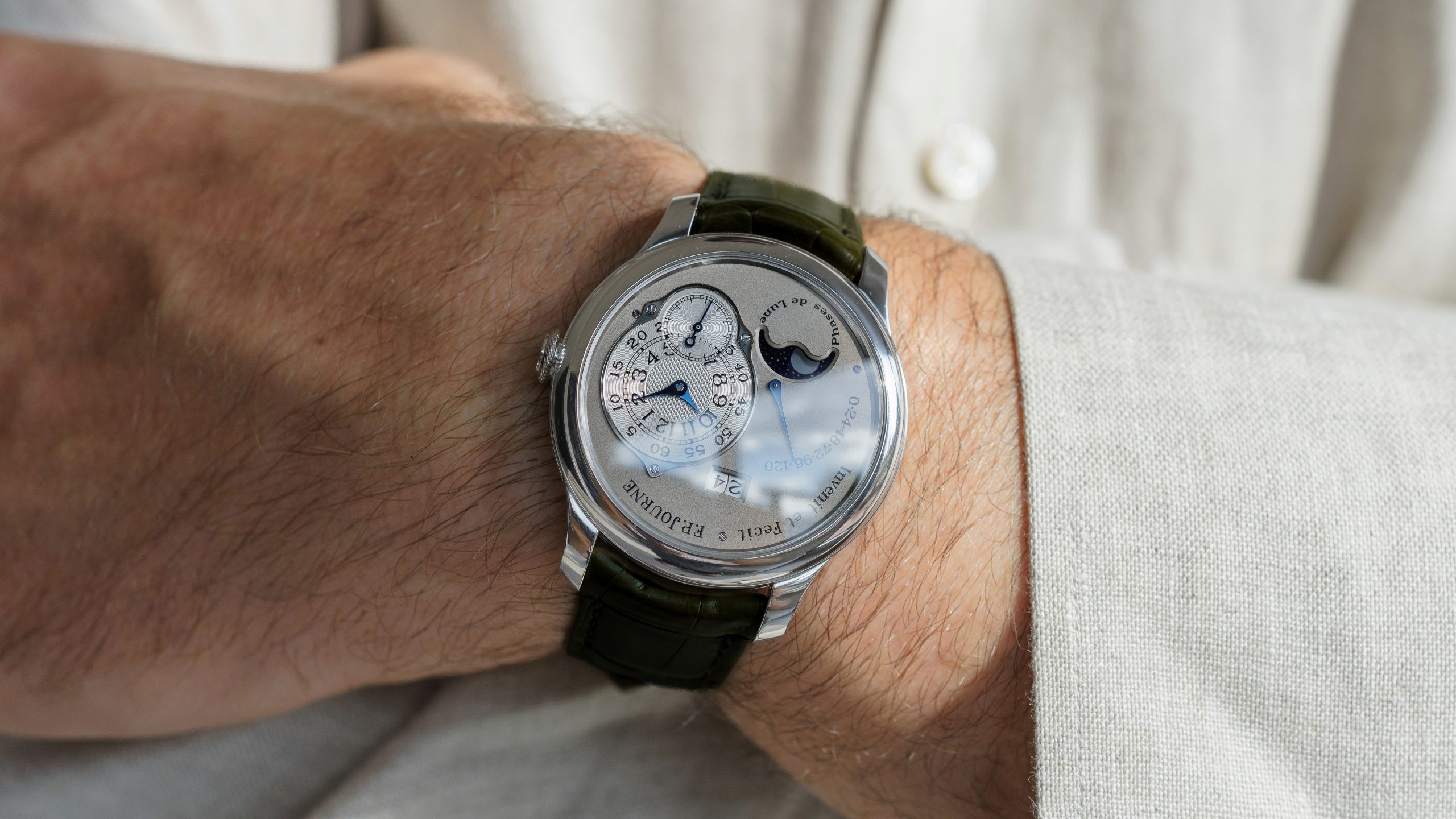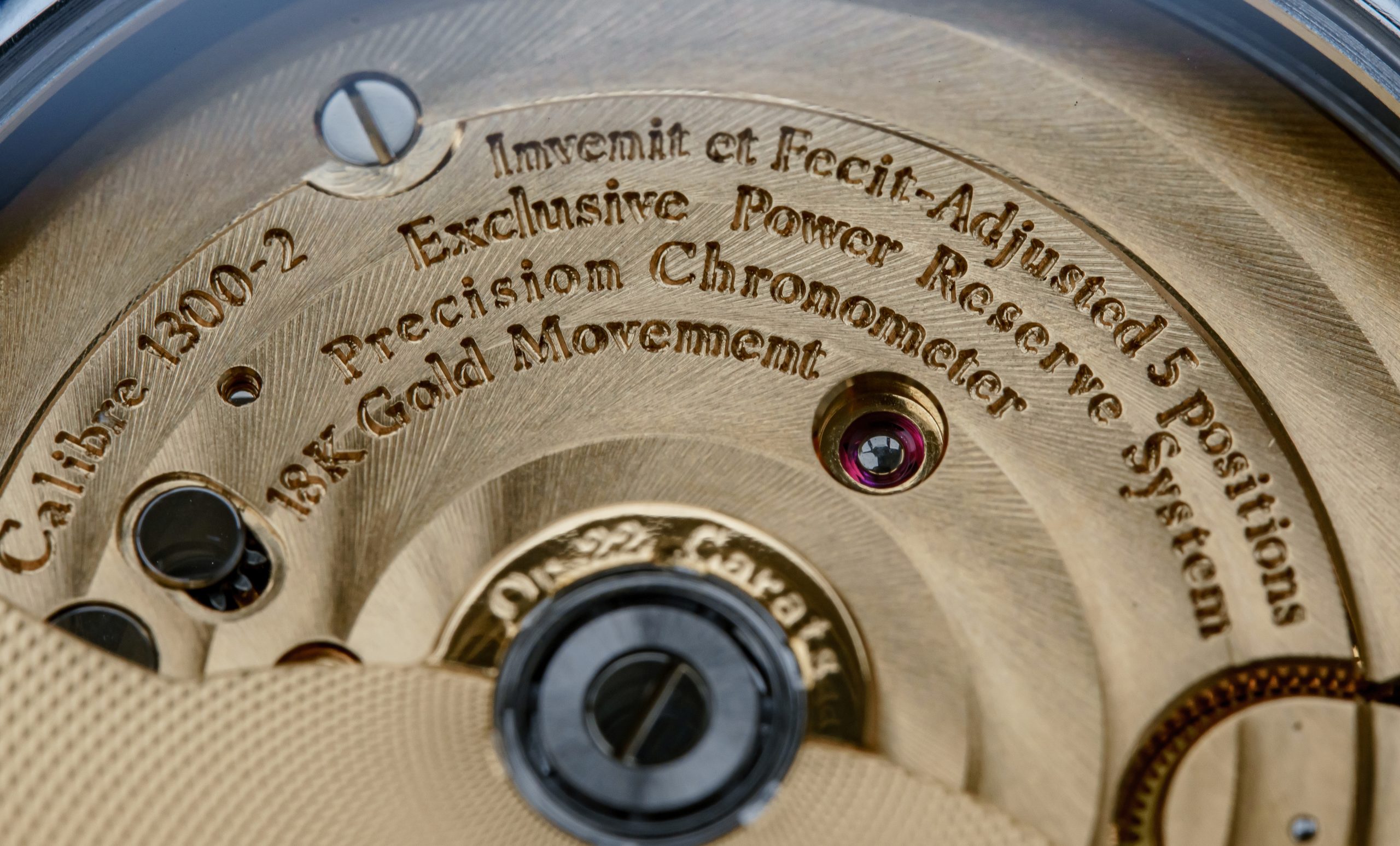After the Tourbillon Souverain and Chronomètre à Résonance, FP Journe developed his first automatic mechanism. This, the Octa, would go on to blossom into a range of complication. The first two made were the Octa Réserve de Marche and the Octa Lune, marking FP Journe's first foray into the world of self-winding. The Octa Lune, released 2003, is undoubtedly one of the most romantic watches in the FP Journe range, equal parts restrained and refined, and a core model to the brand's identity. In the year of its release, it immediately won the 'Men's Watch' award at the Grand Prix d’Horlogerie de Genève. This example is a rarely seen second-generation, which still featured the beloved silver guilloché dial.
The white gold dial of the Octa Lune emphasizes traditional handcraft, beginning with a delicate grained texture to the gold. The moonphase window is stepped, the dial is silver guilloché, and all exposed metal is either heat blued or black polished. This second generation features 'Phase de Lune' text under the moonphase, a hallmark of early dials. The text 'Invenit et Fecit', meaning 'Invented and Made By' precedes FP Journe, a nod to traditional signing conventions. Dials which followed simplified the construction with no guilloché, making these early productions quite recognizable and desirable.
This was the first generation of Octa Lune to feature a solid gold calibre. The second-generation Octa Lune with calibre 1300.2 was only in main production for two years, estimated to be less produced than brass movements. Journe introduced the Octa with bidirectional winding, which was shown later to be less effective for inactive lifestyles than unidirectional winding. The pink gold, bidirectional calibre 1300.2 was only in production from 2005 until 2006, with a transitional year in 2007. It is quite unique, with an off-center winding mass and made entirely of pink gold. Its mainspring is a metre long a 1mm thick, specially designed for this application, which lends a 120 hour reserve. Interestingly, the possible reserve is longer, but chronometric performance is only ensured through these 120 hours and so François-Paul chose to only indicate this range on dial. The winding mass is a guilloché performance, with a movement showcasing perlage, circular striping, fine anglage, and hand engraving.
The Octa Lune has become an independent modern classic in a few short decades, evolving very slowly over its generations but never changing the central design elements. The dial emphasizes the more artful side of François-Paul's watchmaking identity, giving far more visual importance to the moonphase than most dials. The restraint is equally evident, which allows the watchmaking itself to be the focus. There is no busyness to the dial, just proportionality and negative space with an emphasis on time and one heavenly body. It is restrained, refined, and romantic in the extreme.

